

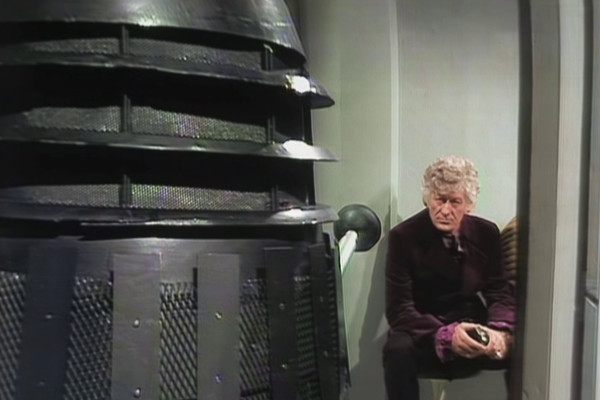
The idea of quoting viewing figures for Doctor Who is, as mentioned in the article on the Tennant Anniversary Specials, largely meaningless without context. As an example, then 11 million people tuned in for the second episode of The Curse of Peladon, which, quoted in isolation, sounds like a pretty sizeable audience.
However, Jon Pertwee's era of Doctor Who played out in such an absurdly competitive environment that the aforementioned episode of Curse only reached 20th place in the charts. The concept of any programme in 2024 getting 11 million viewers is pretty much unthinkable, but the idea of 19 TV shows getting more is impossible to countenance today. Context is everything.
The stats in terms of chart position show us that almost exactly half of the Pertwee episodes failed to make the Top 40 chart. Over 73% failed to make the Top 30, while over 92% of Pertwee Doctor Who episodes fell short of the Top 20.
The run was certainly popular, an audience improvement from the Troughton era, and he was the only original series Doctor whose popularity didn't generally wane. But the fact remains that within such an extraordinarily competitive TV landscape, Doctor Who was only ever a moderate hit, with an average of 43rd place in the charts.
Out of 128 episodes, only one made the Top 10, which is where we come to with Planet of the Daleks. It was, along with Planet of the Spiders, the only story where all its parts made the Top 30, and both stories averaged at 22nd place. The episode that made the Top 10 was the first, making 9th place with 11 million viewers. (Yes, the exact same audience size that saw Curse part two only get to 20th... the variance in audiences from week to week plays a part.)
If you really want direct comparisons, then the Troughton run averaged at 60th place in the charts, with only a single episode making the Top 30 - The Wheel In Space Part Four at 28th spot. Tom Baker was able to capitalise on Jon's increased audience, averaging at 24th place during his first three seasons on the show.
As for Planet of the Daleks, then seeing it in context of the run both improves and weakens it. Following a string of stories where everything is played for laughs, it reintroduces some genuine peril to the programme... even if that "genuine peril" is a bit antiquated, Boy's Own Adventure stuff. Terry Nation's writing for the show was pretty dated even back in the 1960s, but really stands out here, where it's very old-fashioned.
Jon Pertwee is actually a striking actor as the Doctor, and a solid professional in the role. His performance can be mannered, as he has various "tricks" and familiar patterns he returns to, but he turns up and delivers his lines with commitment. This particular adventure, filled with incident, but somewhat childish, sees him come nearest to phoning it in.
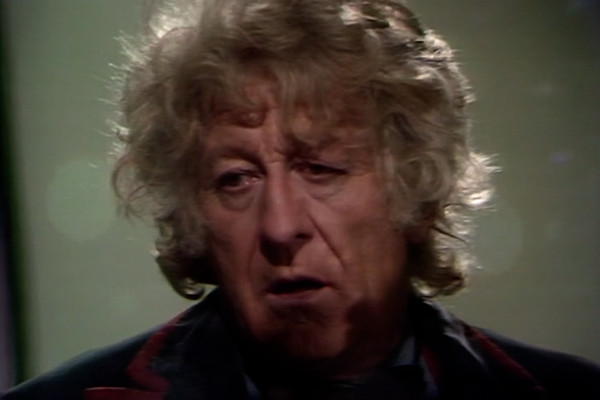
In many ways this is an even worse Dalek story than the previous entry, as all manner of Terry Nation ciphers step onto screen to deliver reams of exposition to one another. Yet it scrapes to a higher place not only on virtue of it being two episodes shorter, but because it does have a kind of charm.
Behind the scenes, it wasn't as straightforward. The usual method of shooting studio scenes episodically was changed to a more filmic style of recording on a set-by-set basis across the entire story. Filming also changed from Mondays and Tuesdays to all-day rehearsal on Monday and then having to record two episodes a time on the Tuesday.
The added strain of the new recording methods, as well as Barry Letts announcing he was leaving during the recording of the serial, piled pressure on Jon. In 2012's Elisabeth Sladen: the autobiography Sladen noted: "The second Jon realised he wasn't enjoying it any more his mind went into overdrive. 'I'm not being paid enough to work like this,' he announced during a break. 'It's time to have a word with the powers that be.'"
Ultimately Jon asked for a pay rise, possibly deliberately high in order to ensure it would be rejected. Jon's version of events had Shaun Sutton, the head of serials, asking him to stay, but unable to comply with Jon's request of "about twenty per cent".
Both of Jon's autobiographies - 1984's Moon Boots and Dinner Suits and 1996's I Am The Doctor - are worth a read, with some engaging tales. The latter even covers his Doctor Who years, so you can get his "take" on each story. However, while they're good for his opinions, they've not been used much here as factual reference works, as many people who worked with Jon, particularly Barry Letts, have said that he was very much a raconteur, and wouldn't necessarily let the truth get in the way of a good anecdote.
In 2005's Still Getting Away With It: The Life and Times of Nicholas Courtney, Courtney concurred with this assessment: "[...] each time Jon told one of his stories he did tend to "embroider" it a little bit more, such that during the course of five years or so it would gradually be changed beyond recognition. It would also have become a far better story."
Doctor Who during Jon's time benefitted from a clarity of vision, with the entire run being script-edited by Terrance Dicks. However, with Robert Holmes due to take over as his successor, he worked on this story, uncredited.
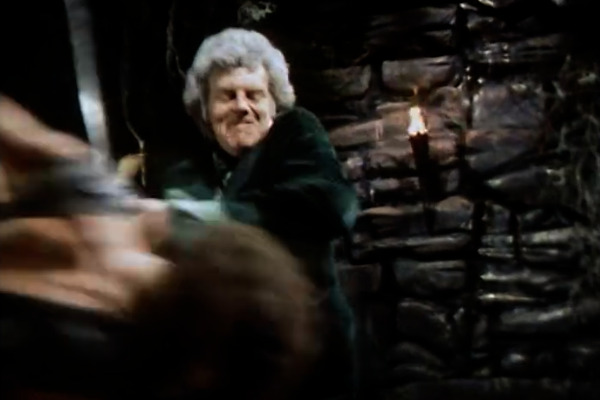
It's probably time to discuss the third Doctor's use of martial arts. Introduced in his fourth story, Inferno, it really came to the fore in Colony In Space, but actually featured in all but two stories from seasons 8-11. (Planet of the Daleks has him just pushing some Daleks, while The Dæmons has him comfortably overpowered by Morris Dancers.)
From a story standpoint, it's puzzling where he learnt this childish-sounding "Venusian Karate/Akido", given that he hadn't demonstrated such skills before. Maybe such matters are taking things too seriously, but the major point is that it removes all tension from the stories if the Doctor is such a hard man. If he's under threat, your concern goes not to the hero of the piece, but to the poor guy he's about to slap around, while even the Master keeps a gun on him in case it's needed.
The Monster of Peladon is one of the few stories where the third Doctor is overpowered, taking a sustained beating off a skunk-haired miner on Peladon. This perhaps illustrates the core issue with trying to make an action star out of a man in his 50s with a bad leg and chronic back pain - the need for a stunt double. While it would have almost certainly been less obvious on 1974 televisions, particularly as many would still be watching on black and white sets, the screen capture above shows stuntman Terry Walsh in full view.
This is, it has to be said, by far the worst example of a stunt double on show in the era. There's a shot in the first episode of Death to the Daleks where half of Terry's face is shown, but not like this, and the increasing clarity of stand ins does illustrate how Jon's physical health was deteriorating during his time on the show. Not "deteriorating" as in he was getting sick, but deteriorating in the sense that he was now 54 and getting far too old to be performing stunts.
In Elisabeth Sladen: the autobiography, Sladen detailed how things could be difficult with Jon. One of their earliest meetings had seen him burst into tears as he was missing Katy Manning so much, while in another instance he slapped her across the face for recounting a bawdy anecdote of his, only to get a slap back. By the time of Peladon she'd begun to get used to his ways and the pressures of the show, stating that it was "the first time I thought, Yes, I'm part of this show. Jon and I are a team."
With various non-disclosure agreements going around, there's perhaps still some history of Doctor Who that we don't know about. One secret that was revealed decades after the fact was that April Walker had originally been cast as Sarah Jane Smith, but was fired at Jon's request. It was Jon's belief that, as a family show, viewers should never suspect that the Doctor was romantically involved with his assistant, and so the role ended up going to an actress who was 4 inches shorter and nearly 3 years younger. Walker later worked with Pertwee in The Navy Lark, noting that she understood his reasoning, but that "I could never quite forgive him". You can see the interview with April by fantom on their YouTube channel.
As for this story, then it's more dull than bad, and okay if you take it an episode at a time. It's no classic, but it's certainly ranked three places higher than I expected it to be. The spikier, more sarcastic relationship that Sarah has with the Doctor compared to Jo Grant means that the charm of the story isn't quite there compared to the first Peladon story, and there's some odd plot inconsistencies, but overall it's not bad, albeit very much a children's show.
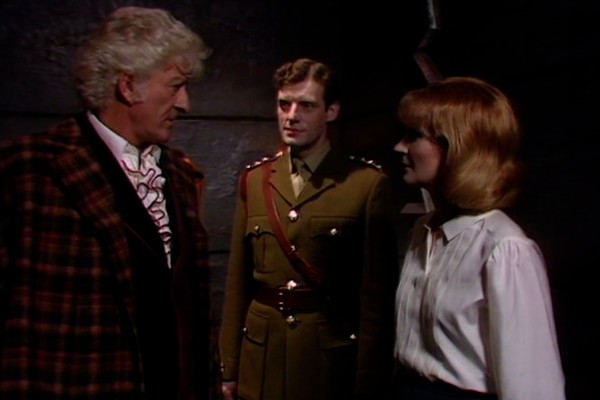
It's sometimes fun to watch these multi Doctor stories in the context of when each Doctor would have experienced them, and this one would probably fit somewhere between the last three stories of Jon's reign.
Of course, you do have to overlook the fact that Jon was 63 when The Five Doctors was recorded, and 54 for the other three stories, but the fannish need to make everything fit into one continuous pattern shouldn't really apply with a show about time travel. While there's fan theories about Troughton having "Season 6B" where unseen adventures took place, events of The Three Doctors - with Hartnell and Troughton being taken out of time when the Doctor was still on the run - would rewrite continuity and mean that many of the black and white stories never actually happened. Placing things inside a box is the very opposite of what Doctor Who should be about.
One of the major issues with putting together a ranking like this is, of course, personal ennui after watching the stories before. With the Pertwee era it wasn't as bad - in fact, it was a pleasure, particularly as there were some stories I'd never seen in decent quality, and some episodes I'd only seen in black and white before. But as this story also features Patrick Troughton and Peter Davison, it means it's the third time I've watched it in the last twelve years, to say nothing of the many, many times I've seen it in the past.
It doesn't help that The Five Doctors is one of the most subjective Doctor Who stories, really depending on your mood when you watch it - is it warm-hearted, nostalgic fun, or self-indulgent cheap rubbish? The truth is that it's probably both at the same time, a kind of Schrödinger's Tat.
In terms of the other Doctors, then Davison gives one of his least nuanced performances, Troughton is once more the "clown" version of his character (albeit more palatable than in The Three Doctors), Tom declined to appear and so appears only in clips, and Richard Hurndall is forced to come up with his own interpretation of the Doctor, as William Hartnell had died in 1975. In amongst all this, Pertwee actually comes off with the most dignity, being in the middle of some of the most striking scenes, and being able to recreate his Doctor like he'd never been away.
Behind the scenes, things were, amusingly, shaken up a little by Jon's not inconsiderable ego. He'd clashed with Anthony Ainley after giving him acting feedback; footage shows that Richard Hurndall was clearly lower down in the pecking order in Pertwee's eyes; he criticised Caroline John's acting choices right in front of her; and he stole one of the lines ("Teeth and curls?") written for Elisabeth Sladen.
Speaking of Caroline John, while the versions of Liz Shaw and Captain Yates he meets are only projected "phantoms", it does give us a story where Yates has first-hand experience of being with Liz. Richard Franklin had the odd situation in 1971 of being a character introduced to the viewers who was already supposedly known to the characters, despite never having been seen before. Those looking for nerdish continuity points can be sated there, along with Jon finally getting to meet the Cybermen.
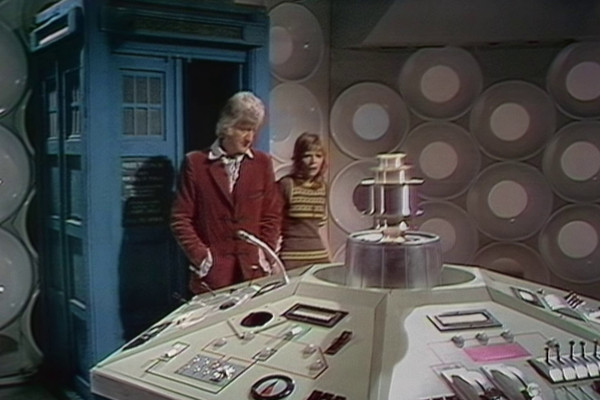
The second of four Pertwee stories that Robert Sloman co-wrote with Barry Letts, followed by The Green Death and Planet of the Spiders. Due to internal BBC practice at the time, it was frowned upon for producers to be credited in other roles, so the stories were credited only to Sloman. This is apart from their first collaboration, The Dæmons, which went out under the pseudonym "Guy Leopold". Barry Letts later thought it "seemed a bit daft" to credit a story to a non-existent person, so let the rest go out just as Bob.
Despite this, it was a complete collaboration, with Barry noting on the commentary track that: "One of the things I had to do all the time was to try and make, er, the structure of the thing work, because ummm [Robert Sloman] didn't really give a damn about the structure." He would also go on to describe The Time Monster as a "mish mash of a story" and was greatly disappointed in many elements, particularly both versions of Kronos, the tomtitular Time Monster.
Many years ago The Time Monster was a huge favourite here at the Anorak Zone, but watching the Pertwee era in sequence, in quick succession, illustrates just how lacklustre it is compared to what came before. It's very much a story made by a team that have got too comfortable. Yes, it's as cute as Hell when Katy cracks up for real in the first episode, but there's no real drama left in the set-up anymore.
There are some wonderful concepts in there, particularly two TARDISes trapped within each other, which is borderline genius, but everything is played without urgency. When the Master first appeared in the series he was a vicious man, but here he's having fun playing silly buggers with the Doctor's voice over the TARDIS speakers, or talking about Jo's coccyx.
Roger Delgado was superb in the part for most of the run, but even he hams it up here (possibly due to the poor lines in some of the script) and when Jo suggests he say: "Curses! Foiled again!", it's a character deconstructed and in need of repair. In fairness, the character of the Master, a renegade Time Lord, was never really that developed. Although earlier stories do show him as quite a planner, at least one step ahead of the Doctor, it was only Delgado's immense talents that made it into a three-dimensional character.
The story also introduced a new TARDIS interior, which Barry Letts disliked and was replaced for the following year. The striking new look with prominent roundels isn't that bad, certainly for a temporary thing, but the issue is that the interior also doubles for the Master's. While this is standard, and requires suspension of disbelief on behalf of the viewer, this draws coincidence too finely, given that they'd both decided to change their interiors to the same, eccentric style at the same time. It's a shame they couldn't have saved the old one just to stand in for the Master's, which would have carried this a bit better.
Despite such criticisms, this story was once loved here, and I still feel a lot of affection towards it, despite its many shortcomings. Plus, you get two episodes with commentary from John Levene, giving his own... off-beat... take on commentating, a sample of which is below:
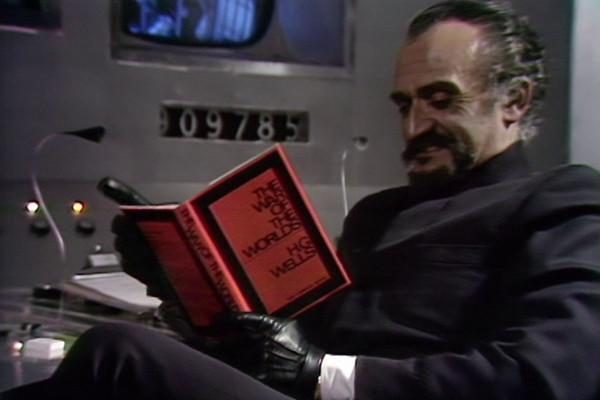
Sometimes watching a story more than once can improve it. Once you're aware that Frontier In Space sees the Doctor and/or Jo being locked in a cell an average of twice per episode (no exaggeration) or that the ending is messy and underdeveloped, you can concentrate on enjoying the rest of the story.
Paul Bernard directs, the man behind Day of the Daleks and The Time Monster, and there is a "soft", undramatic feel to his work somehow. This was his final work on the series, as Barry Letts - already hugely disappointed with the depiction of Kronos in The Time Monster - found the conclusion of this story to be the last straw.
In an extra on The Time Monster, archive footage of Barry (he died in 2009) has him revealing how he never employed Paul again after this: "Paul Bernard was, err, one of the directors who... err, worked with me quite a lot. And he had a lot of errr... very good qualities. I found him difficult to work with in some ways. He wouldn't listen. And err... the consequences were... sometimes not so good. [...] But what really made me decide not to use him again... was the end of, um, Frontier in Space."
Barry expanded on what galled him so much in Frontier In Space's own commentary track, noting that several shots hadn't been filmed, and so the tacked-on "ending" had to be recorded during the same block as Planet of the Daleks: "It is a very poor ending, we tried to make the best of it." Barry also heavily disliked the quite cute "Ogron Eater" monster, noting: "I don't know who designed it or who made it, but er, I didn't see it until I saw it on location [...] I was pretty appalled by it, but there was nothing I could do about it."
It's undeniable that the real issue with the ending is that, as Barry Letts said, there isn't one. In I Am The Doctor, Jon said that he was also perplexed by what is supposed to have happened: "This story saw the final appearance of Roger Delgado as the Master and generally I felt that poor Roger had a raw deal. Of course no one knew that it was going to be Roger's final story, but despite that, the ending was very confusing. I have watched the episode several times to try and figure out what was happening and I just can't work it out at all."
Interestingly, when Malcolm Hulke novelised the story in 1976 under the title Doctor Who and the Space War, he removed most of the issues from the ending. Rather than having the Master shoot the Doctor, he has the Doctor picking up the Master's gun in the confusion of stampeding Ogrons, and holds the Master up so he can get to the TARDIS and take off in safety. The Doctor reflects on returning the Master to prison, but chooses to go after the Dalek army of Planet, musing that "there's something more important for me to do at the moment."
As he was no longer a regular in the series as he had been during Season 8, Roger told Barry Letts that he planned to leave the show as he was being passed up for work elsewhere. It was agreed to write a final story where the Master dies saving the Doctor's life, which may have brought a nice conclusion to the character. Sadly, Roger was killed in a car accident less than eight months after completing work on this serial, aged just 55. A terrific performer, he was electrifying in Season 8 and Season 9's The Sea Devils, but Frontier In Space sadly continues the decline of the character. It's now become all too cosy, and there's no longer any threat or menace. Although it's always nice to see more of Roger, it's tempting to suggest that The Sea Devils would have been the best time to leave the character, as it was his final high point in the series.